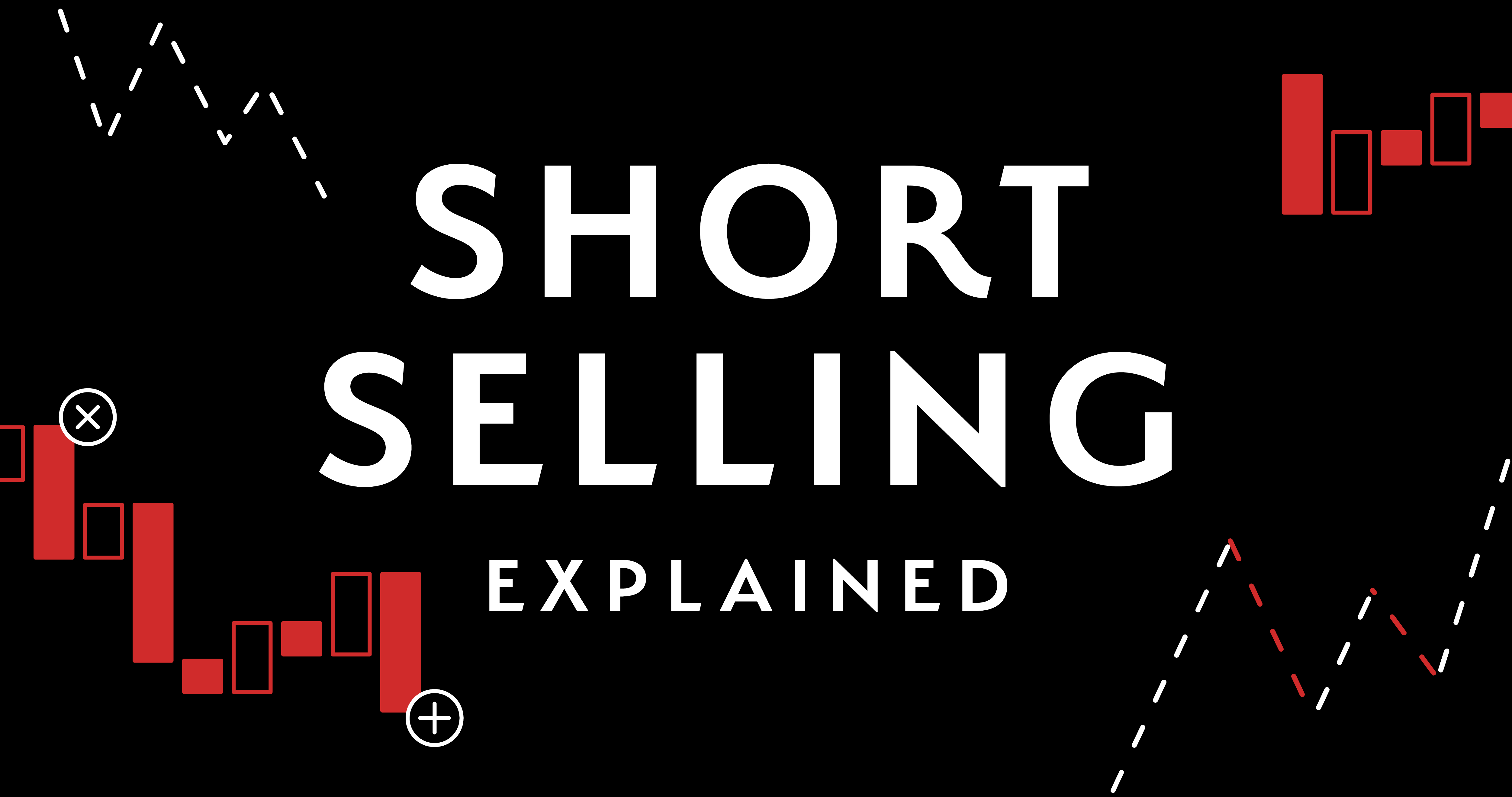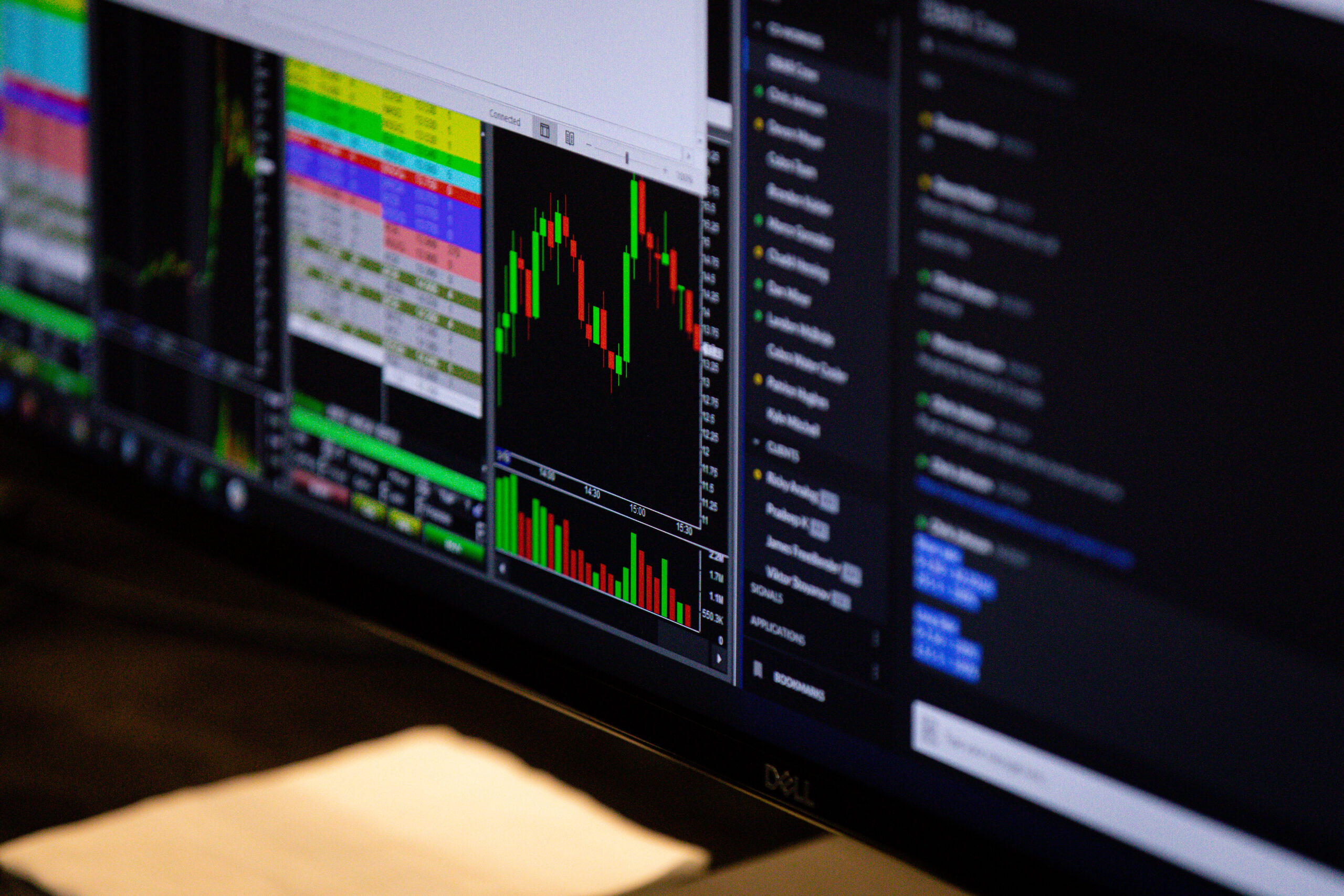Day trading has become one of the most talked-about ways to make money in the financial markets. The idea of buying and selling stocks, forex, or options within a single day to lock in quick profits sounds appealing. But behind the buzz, there’s a steep learning curve that every beginner needs to understand before diving in.
Cobra Trading has built this guide to help you navigate day trading basics. Whether you’re here to understand the rules, learn effective strategies, or build the right mindset, this guide will give you a strong foundation to start your journey.
Day trading isn’t a get-rich-quick scheme—it’s a skill that requires practice, patience, and discipline. Our goal for this guide is to break down complex concepts into actionable steps, helping you build confidence and avoid common mistakes. By the end, you’ll have a clearer picture of what it takes to be a successful day trader.
If you’re just starting out, buckle up—this guide will teach you everything you need to know to approach day trading with clarity and purpose.
What is Day Trading?
Day trading is all about buying and selling assets like stocks or options, within the same trading day. The goal is to take advantage of small price swings and close all your positions before the market shuts down for the day. This way, you avoid the risk of unexpected overnight market moves.
Unlike long-term investing, where you buy a stock and hold it for months or years, day trading is more like a sprint. You’re in and out quickly, aiming for smaller but consistent profits.
But here’s the catch: day trading isn’t just gambling. Successful day traders rely on data, technical analysis, and a solid plan. It’s about making informed decisions, not just hoping a stock will shoot up because you “have a good feeling about it.”
If you’re someone who can stay calm under pressure, make quick decisions, and stick to a plan, day trading might just be your thing.
How To Become A Successful Day Trader
Becoming a successful day trader requires more than just luck or a few good trades. It’s a combination of education, preparation, discipline, and adaptability. Here are key steps to set yourself up for success:
Educate Yourself
Before making your first trade, spend time learning about financial markets, trading strategies, and technical analysis. We will go over more of these further down the post.Read books, take online courses, and follow reliable trading blogs like Cobra Trading. The more knowledge you acquire, the better prepared you’ll be to make informed decisions.
Develop a Trading Strategy
Successful day traders don’t rely on guesswork. They follow proven trading strategies such as scalping, momentum trading, or breakout trading. Choose a strategy that aligns with your risk tolerance, trading style, and financial goals.
Manage Risk Effectively
Risk management is critical to long-term success. Always use stop-loss orders, set daily loss limits, and avoid over-leveraging your trades. Knowing when to cut your losses and step away from the market is just as important as knowing when to take profits.
Build Emotional Discipline
Emotions can be a trader’s worst enemy. Fear, greed, and frustration can lead to impulsive decisions and significant losses. Stay calm, stick to your trading plan, and avoid chasing losses after a bad trade.
Start Small and Scale Gradually
Don’t jump in with large positions right away. Start small, gain experience, and gradually increase your position sizes as you become more confident and consistent.
Keep Learning and Adapting
Markets are constantly changing, and successful day traders adapt to new trends and strategies. Regularly review your trades, identify mistakes, and refine your approach to stay competitive.
Becoming a successful day trader is not a sprint, it’s a marathon. Consistency, discipline, and a willingness to learn are your keys to success.
Is Day Trading the Right Path for You?
Whether day trading is worth pursuing depends on your personal circumstances, financial goals, and risk tolerance.
While it offers potential for substantial profits and schedule flexibility, day trading involves significant financial risk and psychological stress.
More than 90% of day traders fail to achieve consistent profitability.
This reality highlights why careful planning, strict risk management, and deep market knowledge are essential before starting.
Education is Key for A Day Trader
The Uptick Rule is a key tool in maintaining market integrity and preventing excessive short selling from wreaking havoc on stock prices. By enforcing a waiting period for short sales during significant downturns, it helps create a more orderly and stable trading environment. But understanding and adapting to the Uptick Rule is just one piece of the puzzle when it comes to navigating the complex world of trading regulations. Equally important are other rules like the Pattern Day Trader (PDT) Rule, the Unsettled Funds Rule, and Margin Requirements. These regulations play a crucial role in shaping your trading strategies, managing risks, and ensuring you stay compliant in the financial markets. As you continue to build your trading knowledge, will help you make informed decisions and reach your financial goals with confidence and security.
3 Must-Know Rules for Day Traders
Pattern Day Trader (PDT) Rule
The Pattern Day Trader (PDT) Rule is essential for anyone engaging in frequent day trading activities. Established by the Financial Industry Regulatory Authority (FINRA) in the United States, this rule applies to individuals who execute four or more day trades within five business days using a margin account with less than $25,000. A day trade is a person like yourself, buying and selling the same security on the same trading day.
If you fall under the PDT classification without maintaining the required minimum equity of $25,000, your broker may impose restrictions on your account, limiting your ability to execute further trades until you meet the threshold.
The primary purpose of the PDT Rule is to manage risk by preventing inexperienced traders from taking on excessive risks that could lead to significant financial losses, thereby contributing to overall market stability.
To comply with this rule, you can either increase your account balance to meet the $25,000 requirement, limit the number of day trades you execute, or opt for a cash account, which exempts you from the PDT Rule but comes with its own set of restrictions.
Unsettled Funds Rule
The Unsettled Funds Rule is another critical regulation, especially for those operating with cash accounts. In the U.S. stock market, the standard settlement period for trades is one business day after the trade date, known as T+1. This means that the funds from selling securities are not immediately available for withdrawal or for executing new trades until the settlement process is complete. This limitation can hinder your ability to quickly reinvest proceeds from sales, potentially causing you to miss out on timely trading opportunities.
In previous years, the rule used to be T+2, where funds would take two business days after the trade date to settle. The change from T+2 to T+1 took effect on May 28, 2024.
Additionally, attempting to trade with unsettled funds in a cash account can lead to free riding violations, resulting in restrictions on your account. While cash accounts are subject to the Unsettled Funds Rule, margin accounts offer greater flexibility by allowing you to borrow against your securities, effectively bypassing the settlement period.
However, margin accounts come with their own risks, including the possibility of margin calls. To navigate the Unsettled Funds Rule effectively, it’s advisable to plan your trades ahead of time, regularly monitor your account status to know which funds are settled, and educate yourself on the differences between cash and margin accounts to determine which aligns best with your trading style and risk tolerance.
Margin Requirements
Margin Requirements play a pivotal role in trading, especially when it comes to leveraging your investments. Margin trading allows you to borrow funds from your broker to purchase securities, enabling you to buy more than you could with your available capital alone.
To open a margin account, you must meet the initial margin requirement, typically depositing at least 50% of the purchase price of the securities. Additionally, you must maintain a maintenance margin, usually around 25% of the total market value of the securities in your account.
While margin accounts can significantly increase your buying power and potential returns, they also amplify your risks. If the value of your investments declines and your account equity falls below the maintenance margin, your broker may issue a margin call, requiring you to deposit additional funds or sell securities to cover the shortfall. Furthermore, borrowed funds accrue interest, which can erode your profits or exacerbate your losses over time.
It’s crucial to use margin sparingly and only when you fully understand the associated risks. Monitoring your positions closely and familiarizing yourself with your broker’s margin policies, including interest rates and liquidation procedures, are best practices to manage the complexities of margin trading effectively.
How to Start Day Trading Successfully
Education and Knowledge
Before diving into day trading, it’s super important to get your homework done. Jumping into a trading platform without understanding what you’re doing can leave you feeling lost amidst all the numbers and charts. Start by taking some courses, watching professional traders to pick up their tricks, and reading books on the subject. Trust me, this step cannot be stressed enough! The more you know, the better prepared you’ll be to navigate the markets confidently.
Build a Plan
Get specific with your goals and strategies. Think about what you want to achieve, how much risk you’re comfortable with, and the trading strategies you’ve learned. Your plan should detail when you’ll enter and exit trades, how much money you’ll risk on each trade, and your overall approach to managing risk. Before you start using real money, test out your plan with a trading simulator. This way, you can get a feel for how the market behaves and how your strategies work without any financial pressure.
Find a Platform that Works for You and Your Funds
Choosing the right broker is key. Look for one that’s reputable, caters to day traders, and offers low transaction fees, fast order execution, and a reliable trading platform. Cobra Trading is one of the top brokers that can help fund your account. Just don’t forget to start small. It’s a good idea to begin with an amount you’re comfortable with and can afford to lose. This way, you can learn the ropes without risking too much money upfront.
Luckily, Cobra Trading can help you navigate the whole process and find out if they are right for you.
In this step-by-step video we show you how to open a new account with us.
Practice
Take advantage of demo accounts on platforms like DAS Trader Pro to hone your strategies without any real risk.
Spend plenty of time trading with paper money, sticking to the amounts you plan to use in your live account.
For example, don’t trade with $20,000 in a demo account if that’s not what you’ll have when you go live.
If your simulated trades show that your wins outweigh your losses, you might be ready to take the next step. Be realistic with your practice, keep detailed notes, and tweak your strategies based on what you learn.
Understanding Financial Markets as A Day Trader
A key foundation for successful day trading is a strong understanding of financial markets. Financial markets are complex ecosystems influenced by countless factors, including economic policies, corporate performance, and global events. To navigate this landscape effectively, day traders must continuously educate themselves.
Like stated before, reading books, taking courses, and studying financial markets are excellent starting points. Pay attention to key economic indicators, such as the Federal Reserve System’s interest rate plans, employment reports, and GDP data. These indicators can create significant market movements and present trading opportunities. Additionally, keep track of leading indicator announcements and financial news to stay informed about shifts in the market landscape.
It’s equally important to understand the companies and stocks you’re trading. Study their financial health, leadership, and historical performance. Get familiar with common investment vehicles, including stocks, bonds, commodities, and mutual funds, and understand how they interact within broader market trends.
The more informed you are, the better you’ll be at anticipating market movements and identifying profitable trading opportunities. In day trading, knowledge truly is power.
As a day trader, understanding market regulations is just as important as knowing technical patterns and economic indicators. Rules like the Uptick Rule help maintain stability in the market and prevent extreme price swings caused by aggressive short selling.
The Uptick Rule (SSR – Short Sale Restriction)
Have you ever heard of short selling? It’s when traders bet that a stock’s price is going to drop. Sounds pretty straightforward, right? But while short selling can be a great way to make money when markets are falling, it also comes with some serious risks. To keep things in check and maintain market stability, regulators introduced something called the Uptick Rule, also known as the Short Sale Restriction (SSR).
So, what exactly is the Uptick Rule? Essentially, it’s designed to stop traders from overdoing short selling, which could cause a stock’s price to plummet even more. Here’s how it works: if a stock drops more than 10% in a single day, the Uptick Rule kicks in. This means traders can’t short sell the stock at the current bid price. Instead, they have to wait for a slight price increase, or an “uptick,” before they can execute their short sale. This little pause helps prevent a stock from spiraling out of control when it’s already on a free fall.
For those who like to short sell, the Uptick Rule means you’ve got to tweak your strategies a bit. You need to keep a close eye on stock movements and time your short sales to match those upticks instead of just going with the bearish trends. This can make things a bit tricky because it might reduce the liquidity of the stock you’re trading. With fewer short sales happening during a downturn, there’s less trading activity, which can lead to wider bid-ask spreads. Plus, both traders and brokerage firms need to stay on top of these rules to avoid any penalties or restrictions on their accounts.
Why did regulators put the Uptick Rule in place in the first place? It all comes down to preventing market manipulation and keeping excessive short selling in check. Without this rule, traders could aggressively short a stock just to drive its price lower, harming both the company and other investors. By enforcing a waiting period for short sales during significant downturns, the rule helps reduce market volatility and promotes more rational trading decisions. This makes the market a more trustworthy and stable place for everyone involved, protecting both individual and institutional investors from the negative effects of extreme short selling.
If you want to navigate the Uptick Rule like a pro, here are a few tips. First, stay informed about any regulatory changes and know exactly when the Uptick Rule gets triggered. Using real-time market data and setting up alerts can help you keep track of significant price movements. Next, adjust the timing of your short sales to align with those upticks instead of just following the bearish trends. This requires a bit of patience and precise execution. It’s also a good idea to diversify your trading strategies—think about incorporating long positions, options trading, or hedging techniques to balance out the limitations imposed by the Uptick Rule.
For those using margin accounts (we go over in more depth what a margin account is below), it’s crucial to use margin wisely and understand the increased risks involved. Leveraging technology can also give you an edge. Advanced trading platforms and automated trading features can help you execute trades efficiently within the constraints of the Uptick Rule. And don’t forget about risk management! Setting stop-loss orders and managing your position sizes can protect your investments from unexpected market swings.
Of course, the Uptick Rule isn’t perfect. Markets can still get pretty volatile even with the rule in place, so you’ve got to stay vigilant and ready to adapt to sudden changes. Reduced short selling can also mean lower liquidity for specific stocks, making it tougher to enter or exit positions without affecting the stock price. Financial regulations are always evolving, so staying updated on any potential changes to the Uptick Rule or related regulations is a must for any serious trader.
Terms To Get To Know as A Day Trader
Going Long, Going Short
Going long is just a fancy way of saying you’re buying something because you think its price will go up. On the flip side, going short means you’re betting that the price will drop. But be careful with short selling—it can be pretty risky. If the price keeps rising, your losses can keep growing since there’s no cap on how high a price can go.
Risk
When we talk about risk in trading, we mean the chance that you could lose money. Especially when you’re trading with margin (borrowing money to trade), the stakes are higher because you could end up losing more than what you initially put in. It’s super important to know the risks involved and have strategies in place to manage them. Luckily, there are tools and techniques available to help keep those risks in check.
Volatility
Volatility is all about how much and how quickly the price of something changes. When markets are volatile, prices are jumping up and down a lot, often because of big news, events, or just general market feelings. While high volatility can be scary and risky, it also opens up chances to make some good trades if you have a solid plan and know how to handle the ups and downs.
Scalping
Scalping is a fast-paced trading style where you aim to profit from tiny price changes. Imagine jumping in and out of trades within minutes or even seconds to catch those small gaps between the buy and sell prices. Scalpers focus on making lots of quick, small gains instead of holding onto a position for a long time. It’s all about speed and precision, taking advantage of every little movement in the market to build up your profits.
Penny Stocks
Penny stocks are cheap but come with high risks. They are often illiquid, volatile, and subject to manipulation. For beginners, avoiding penny stocks is often a safer choice until they gain more experience.
Nano Cap Stocks
Nano cap stocks are the smallest publicly traded companies, with market capitalizations under $50 million. These stocks are extremely volatile and risky, with very low floats and limited public information available.
Due to their small size and high susceptibility to manipulation, nano cap stocks require extensive research and should generally be approached with extreme caution by day traders.
Micro Cap Stocks
Micro cap stocks are publicly traded companies with market capitalizations between $50 million and $300 million. These stocks tend to be more volatile than small cap stocks, making them particularly risky for day trading.
First, like nano caps, micro caps often experience significant price volatility throughout the trading day. This volatility creates numerous opportunities for both long and short positions. While larger companies might see their stock price move by fractions of a percentage point, micro caps can swing 50%-300%, or even more within a single trading session.
These stocks have become increasingly popular among day traders for several compelling reasons.
Short sellers are particularly drawn to micro cap stocks because these companies often have:
- Less institutional ownership, making opportunities for smaller account size traders
- More susceptibility to market news and sector trends
- Lower trading volumes, which can lead to larger price swings
- Less analyst coverage, potentially creating information gaps that lead to price inefficiencies
Traders should note that while the volatility of micro cap stocks presents opportunities, it also comes with increased risks. The same factors that create profitable trading opportunities can also lead to rapid, unpredictable price movements that can quickly turn against a position.
Small Cap Stocks
Small-cap stocks are those with a relatively small market capitalization, typically between $300 million and $2 billion.
Large Cap Stocks
Large cap stocks are companies with market capitalizations exceeding $10 billion. These stocks are typically more stable and less volatile than their smaller counterparts, making them attractive to institutional investors and conservative traders. While they may not offer the dramatic price swings of micro or small caps, large caps can still provide solid day trading opportunities, especially during earnings seasons or major market events.
“The Trend is Your Friend”
One of the most repeated phrases in trading is, “The trend is your friend.” But what does it actually mean?
In simple terms, it means you should trade in the direction of the prevailing trend in the market. If a stock’s price is steadily rising, a trader following this principle would look for opportunities to buy rather than trying to predict when the price might fall. Conversely, if a stock’s price is consistently falling, a trader might focus on short-selling opportunities.
Trends form because of collective investor sentiment and momentum. When many traders are buying or selling in the same direction, it creates a trend. The longer the trend persists, the more traders tend to jump on board, reinforcing the movement.
For beginners, following trends is often a safer strategy than trying to predict reversals or “calling the top” of a rally. However, it’s crucial to identify real trends versus short-term fluctuations. Tools like moving averages, trendlines, and technical indicators (e.g., RSI and MACD) can help you confirm whether you’re dealing with a strong trend or just noise.
The bottom line?
Trading with the trend stacks the odds in your favor. Fighting against it is usually a losing battle.
Day Trading Charts and Patterns Day Traders Should Recognize
Candlestick Patterns
Candlestick charts are visual tools used by traders to represent price action over time. Each candlestick shows the opening, closing, high, and low prices for a specific period. Common patterns include doji candles, engulfing candles, and hammer patterns. Doji candles often signal indecision in the market, while engulfing candles suggest a potential reversal. Learning to recognize these patterns helps traders predict future price movements with greater accuracy.
Technical Indicators
Technical indicators are mathematical calculations based on a stock’s price, volume, or open interest. Indicators like RSI (Relative Strength Index) help traders identify overbought or oversold conditions, while MACD (Moving Average Convergence Divergence) helps spot changes in momentum. Bollinger Bands measure price volatility. Combining these indicators with candlestick patterns can provide stronger signals for entry and exit points.
Volume Analysis
Volume measures the number of shares traded in a given period and is a critical factor in confirming trends. A price breakout accompanied by a volume spike suggests strong buying or selling pressure, making the breakout more reliable. On the other hand, a weak volume during a breakout might indicate a false signal. Successful traders pay close attention to volume to validate their analysis.
Confirmation Signals
Relying on a single indicator or pattern can be risky. Traders often seek confirmation signals to validate their trades. For example, a volume spike during a breakout or Level 2 data showing significant buyer or seller interest can confirm a trend. Support and resistance levels also provide additional context for pattern reliability.
Exit Strategies Based on Patterns
Patterns like triangles, flags, and head-and-shoulders can help traders determine exit points. In a triangle breakout, for instance, traders often set profit targets by adding the triangle’s height to the breakout point. These predefined targets allow traders to lock in profits systematically.
Timing Your Trades
The first and last 30 minutes of the trading day are typically the most volatile. Seasoned traders may capitalize on these periods, but beginners are often better off observing and waiting for clearer signals before entering trades.
Understanding and applying these patterns and tools will create a structured approach to day trading, increasing your chances of consistent success.
Making your First Trade
Start Small
When you’re ready to trade with real money, start small to minimize the risk of losing everything on a few bad trades. As you gain experience, keep reviewing your trades and compare them against your learning materials to refine your strategy. Day trading is all about adapting to ever-changing market conditions, so staying flexible and continuously improving your approach is essential for long-term success.
How to Limit Losses When Day Trading
Stop-Loss Orders
Limiting losses is one of the most important aspects of day trading. A stop-loss order is designed to automatically sell your position when the stock hits a pre-defined price, limiting potential losses. For long positions, you might set a stop-loss just below a recent low, and for short positions, just above a recent high. Volatility can also guide stop-loss placement; for example, if a stock fluctuates by $0.05 a minute, you might place your stop-loss $0.15 away from your entry point to allow for natural movement.
Many traders use two types of stop-loss orders: an actual stop-loss, which executes automatically, and a mental stop-loss, where you manually exit if certain criteria are violated. The key is consistency—your stop-loss strategy should be specific, testable, and repeatable.
Set a Financial Loss Limit
A daily loss limit is another critical safeguard. Decide beforehand how much money you’re willing to lose in a single day. If you hit that limit, stop trading immediately. Emotional trading after losses often leads to poor decisions and even more significant losses.
Test Your Strategy
Before trading live, test your stop-loss and trading strategy extensively. Go through historical charts and paper trade for at least 50–100 simulated trades, or until you feel you have a solid grasp, and track your results. If your strategy consistently hits your stop-loss orders without reaching profit targets, it’s time to refine your approach.
Know When to Exit
Exiting a trade can be as critical as entering one. Trailing stops, profit targets, and stop-loss orders are common exit strategies. Trailing stops allow your stop-loss to move upward as your position gains value, locking in profits while limiting losses.
Avoid holding positions overnight to escape losses. This often leads to more risk, including margin calls, borrowing costs, and exposure to bad news released after hours.
How Much Can Beginner Day Traders Realistically Earn?
The earnings of day traders vary widely and depend on factors such as experience, skill level, trading strategy, and market conditions.
Some day traders may earn substantial incomes, while others may struggle to break even or face losses.
It’s essential to understand that day trading is not a guaranteed way to make money—it’s a high-risk activity that requires expertise, discipline, and continuous improvement.
Don’t set expectations for how much you could earn. Instead, focus on knowing how much you can afford to lose without putting yourself in a financial bind. Never risk more than you can afford to lose.
How Much Money Do You Need to Start Day Trading?
According to the Financial Industry Regulatory Authority (FINRA), if you want to execute four or more day trades within five business days, you must maintain a minimum account balance of $25,000. This rule aims to protect traders from over-leveraging and excessive risk-taking. However, $25,000 is just the baseline—additional funds are often needed to cover transaction fees, unexpected losses, and the psychological pressure of trading with money you can’t afford to lose.
For beginners, it’s wise to start with more capital than the minimum requirement to provide a cushion against inevitable early losses. Remember, day trading should never involve money earmarked for essential expenses or long-term financial goals.
Day Trading Isn’t Easy
Day trading isn’t a get-rich-quick scheme. It’s a craft that demands practice, patience, and discipline. Every trade offers a lesson, whether it’s a win or a loss. The key to long-term success lies in consistency, adaptability, and a willingness to keep learning. Strategies will evolve, mistakes will happen, and markets will change. But every step you take brings you closer to becoming a skilled trader.
As you continue your trading journey, remember that success isn’t measured by a single trade or even a single day. It’s built over time, through repeated efforts, smart decision-making, and the ability to stay focused when things don’t go as planned. Stick to your trading plan, manage your risks, and celebrate your progress, no matter how small.
In the end, day trading is about growth, both financially and personally. Whether you’re trading full-time or as a side hustle, the skills you develop along the way will serve you well beyond the trading desk. Stay committed, stay disciplined, and most importantly, enjoy the process.






